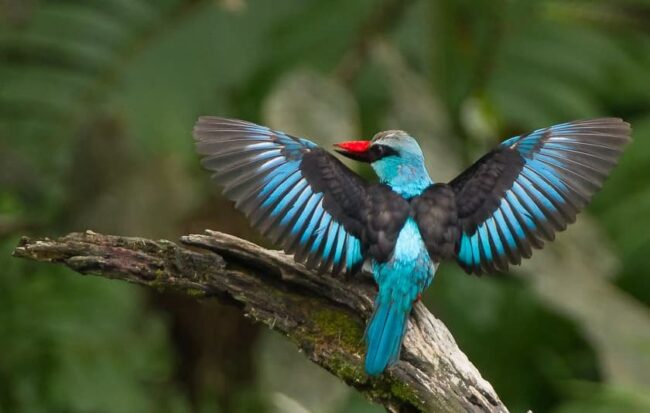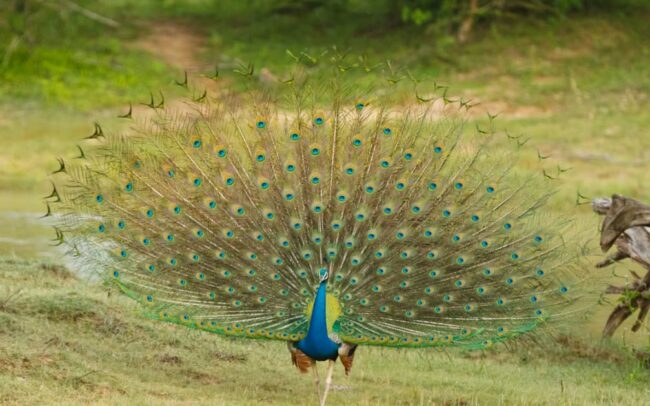The avian kingdom is a treasure trove of incredible bird species, each with its unique charm. Among them, the Red-crowned Barbet (Megalaima rafflesii) stands out as a colorful gem. With its vibrant plumage and distinctive features, this bird captivates birdwatchers and nature enthusiasts around the world. In this article, we will take a closer look at the captivating Red-crowned Barbet, exploring its habitat, behavior, conservation status, and tips for observing this magnificent species in the wild.
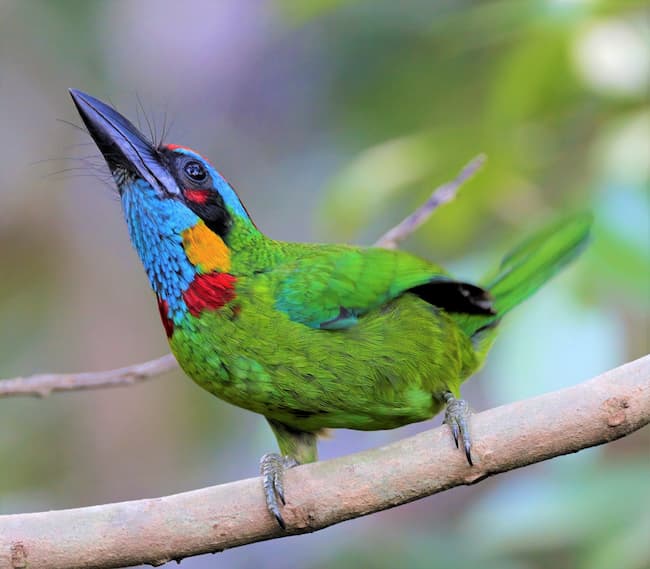
Overview of the Red-crowned Barbet
2.1 Habitat and Distribution
The Red-crowned Barbet is native to the rainforests and tropical regions of Southeast Asia. It can be found in countries such as Malaysia, Indonesia, Thailand, and
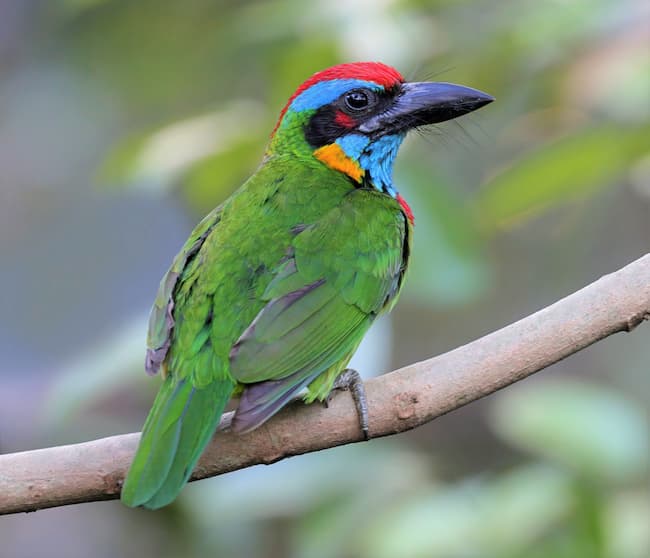
2.2 Physical Characteristics
The Red-crowned Barbet is a medium-sized bird with a compact build. It showcases a striking combination of colors with a bright red crown, vibrant green upperparts, and a yellowish throat and breast. Its stout bill and strong feet are well-adapted for its feeding habits and perching on branches.
The Radiance of the Red-crowned Barbet
3.1 Vibrant Plumage and Coloration
The Red-crowned Barbet’s plumage is a marvel of nature’s artistry. Its brilliant red crown serves as a stunning contrast against its green body, making it highly visible amidst the dense foliage of the rainforest. This vibrant coloration is a visual treat for bird enthusiasts and a testament to the beauty of tropical bird species.
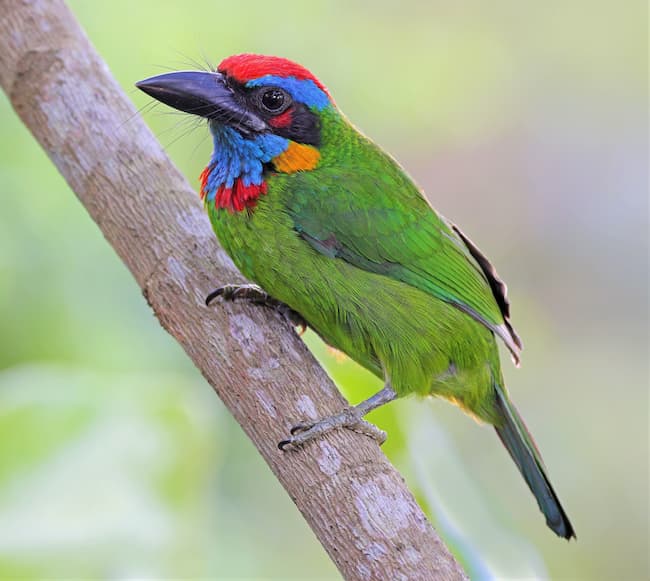
3.2 Unique Features and Adaptations
Apart from its captivating coloration, the Red-crowned Barbet possesses unique features and adaptations that contribute to its survival in its natural habitat. Its stout bill is designed for feeding on fruits and insects, and its strong feet allow for secure perching on tree branches. These adaptations enable the barbet to navigate its rainforest home with ease.
Behavior and Feeding Habits
4.1 Vocalizations and Communication
The Red-crowned Barbet is known for its distinctive calls and vocalizations. It produces a variety of sounds, including a repetitive “pok-pok-pok” and a melodic “poo-poo-poo” that can be heard echoing through the forest. These vocalizations serve as territorial displays and communication with other members of their species.
4.2 Nesting and Breeding Behavior
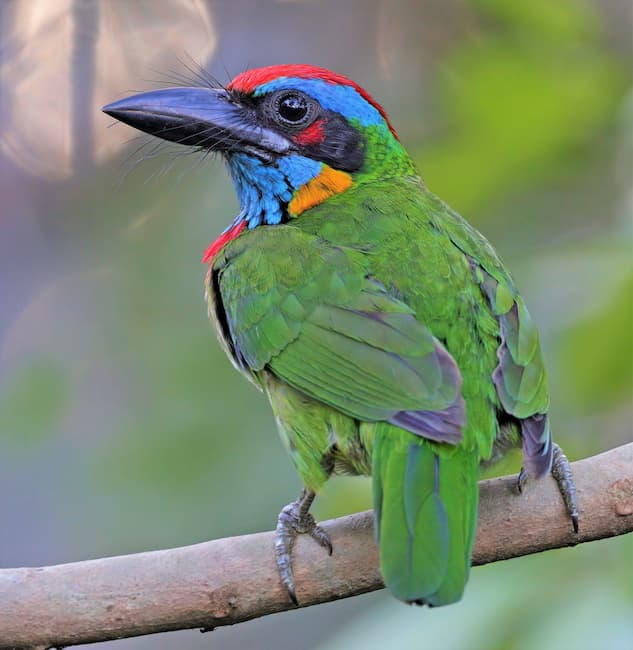
During the breeding season, Red-crowned Barbets engage in courtship displays, including bobbing their heads and calling to attract a mate. They excavate nest cavities in tree trunks or bamboo, where the female lays her eggs and both parents take turns incubating them. This cooperative breeding behavior ensures the survival of their offspring.
4.3 Diet and Feeding Habits
Red-crowned Barbets primarily feed on a diet consisting of fruits, berries, and insects. They play a crucial role in seed dispersal, as they consume fruits and excrete the seeds in different areas, aiding in forest regeneration. Their stout bills are adapted for crushing and consuming a variety of fruits, making them essential contributors to the ecosystem.
Conservation Status and Threats
5.1 Conservation Status of the Red-crowned Barbet
The Red-crowned Barbet is currently listed as a species of least concern on the International Union for Conservation of Nature (IUCN) Red List. However, habitat loss due to deforestation and fragmentation poses a significantthreat to the species. The destruction of rainforests for agriculture, logging, and urbanization is diminishing the available habitat for the Red-crowned Barbet and other forest-dwelling species.
5.2 Threats to the Species
The primary threat to the Red-crowned Barbet is habitat loss. As forests are cleared, fragmented, or degraded, the barbet’s habitat shrinks, leading to a decline in population numbers. Additionally, illegal wildlife trade and hunting pose additional risks to the species in certain areas.
5.3 Conservation Efforts
Conservation efforts are crucial to safeguard the Red-crowned Barbet’s future. Organizations and governments are working together to protect and restore the bird’s habitat through initiatives such as reforestation, establishment of protected areas, and sustainable land-use practices. Raising awareness about the importance of forest conservation and engaging local communities in conservation activities are also vital steps in ensuring the species’ long-term survival.
Birdwatching Tips and Ideal Habitats
6.1 Spotting the Red-crowned Barbet
To increase your chances of spotting the Red-crowned Barbet, head to its preferred habitats in the rainforests of Southeast Asia. Look for areas with dense vegetation, tall trees, and a variety of fruit-bearing plants. Patience and keen observation are key when searching for this elusive bird.
6.2 Best Times and Locations for Birdwatching
The Red-crowned Barbet is active during the early morning and late afternoon hours. These periods offer the best opportunities for observing their foraging and vocalizations. Popular locations for birdwatching the Red-crowned Barbet include national parks and protected areas in countries like Malaysia, Indonesia, and Thailand.
6.3 Tips for Observing and Photographing
When observing the Red-crowned Barbet, it’s essential to maintain a respectful distance and minimize disturbance. Binoculars and a camera with a telephoto lens will enhance your birdwatching experience. Pay attention to their vocalizations and movements, as they can provide clues to their presence.
Conclusion
The Red-crowned Barbet is a true gem of the avian world. Its vibrant plumage, unique adaptations, and captivating behaviors make it a delightful species to encounter. By understanding and appreciating this colorful bird, we can contribute to its conservation and ensure the preservation of its rainforest habitat for generations to come.
FAQs
FAQ 1: Where can I find the Red-crowned Barbet?
The Red-crowned Barbet is found in the rainforests of Southeast Asia, including countries such as Malaysia, Indonesia, Thailand, and the Philippines.
FAQ 2: What is the significance of the Red-crowned Barbet’s bright red crown?
The bright red crown of the Red-crowned Barbet serves as a distinguishing feature and may play a role in visual communication, including species recognition and courtship displays.
FAQ 3: What is the diet of the Red-crowned Barbet?
The Red-crowned Barbet primarily feeds on fruits, berries, and insects. Its stout bill is well-adapted for crushing and consuming a variety of fruits found in the rainforest.
FAQ 4: Is the Red-crowned Barbet endangered?
The Red-crowned Barbet is currently listed as a species of least concern. However, habitat loss due to deforestation poses a significant threat to its long-term survival.
FAQ 5: How can I contribute to the conservation of the Red-crowned Barbet?
You can contribute to the conservation of the Red-crowned Barbet by supporting organizations working towards rainforest conservation, raising awareness about the importance of preserving their habitat, and practicing responsible ecotourism and birdwatching ethics when observing the species in the wild.
